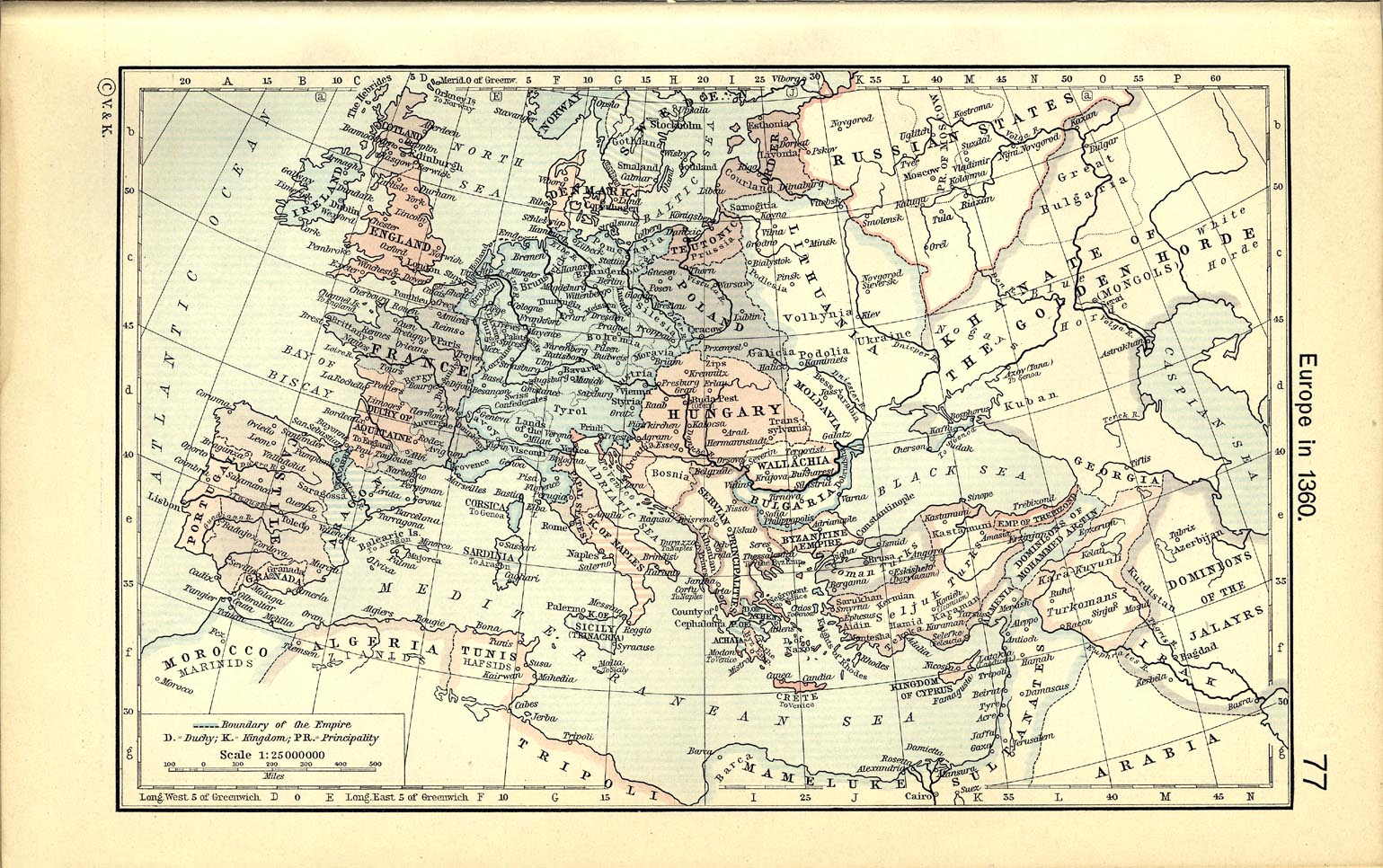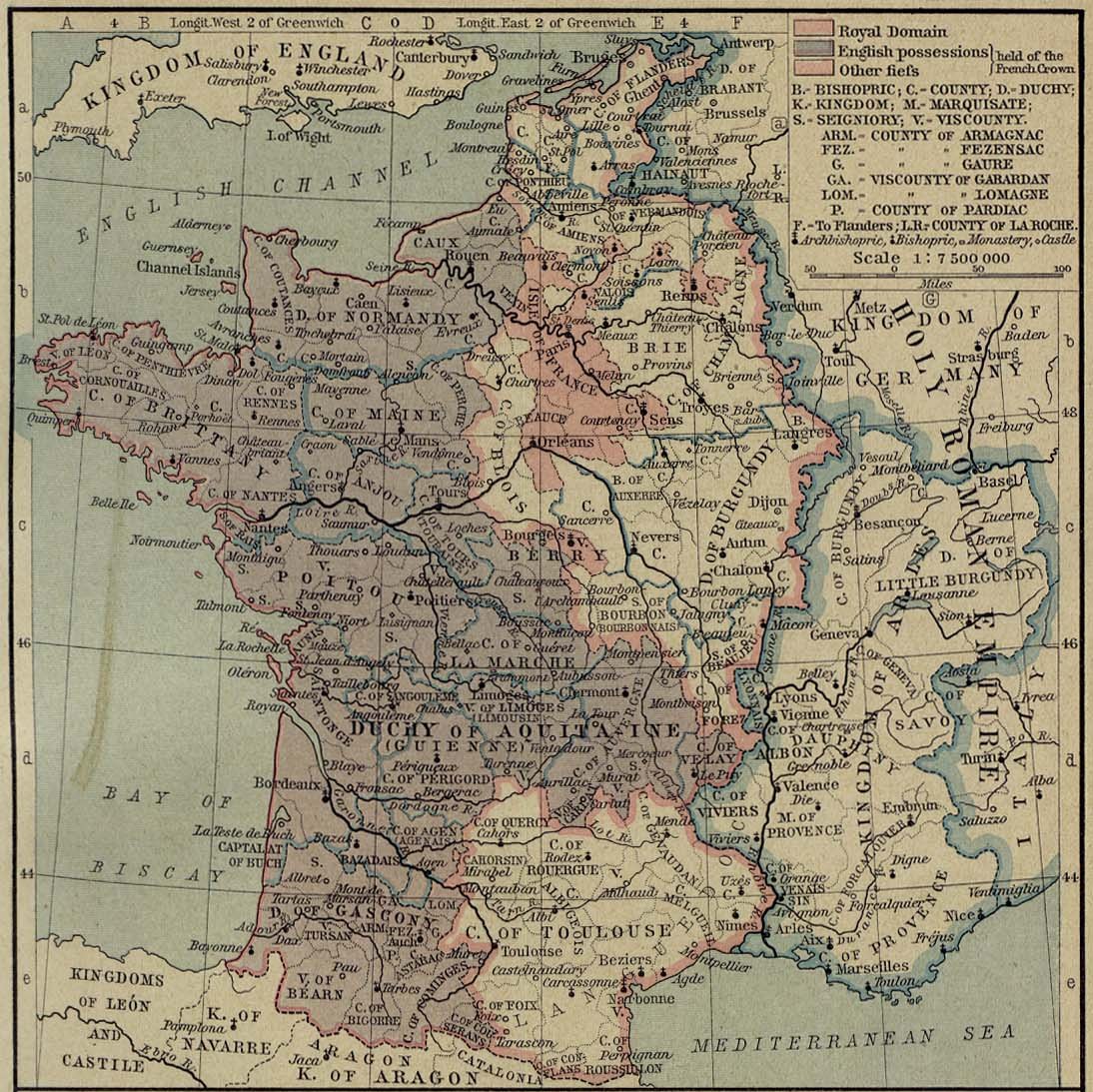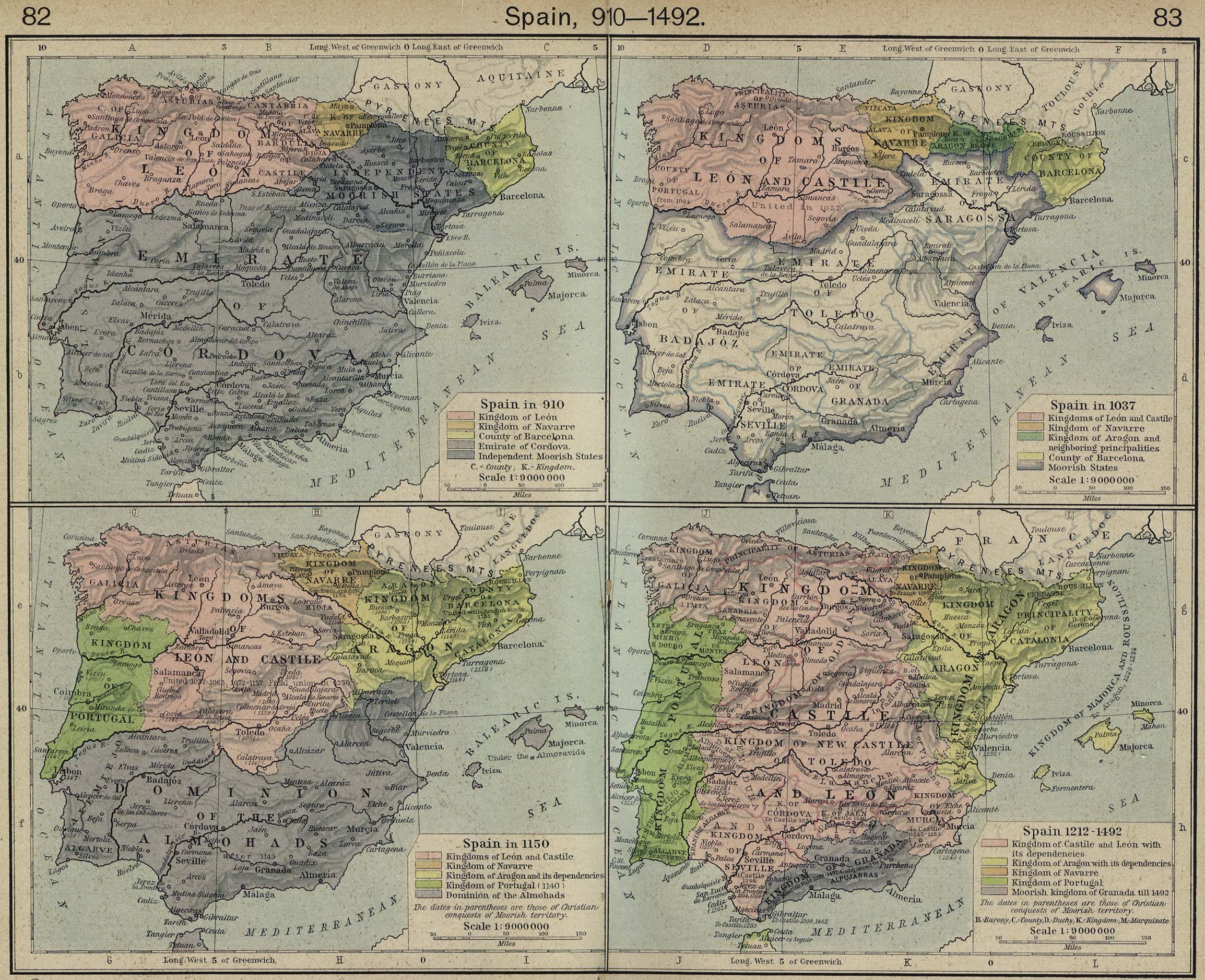|
Politics
in the 12th and 13th centuries:
|
Popes
|
Emperors
|
|
Alexander
III, 1159–81
|
Frederick
I, Barbarossa, 1152–90
|
|
Innocent
III, 1198–1216
|
Henry
VI, 1190–97
|
|
Gregory
IX, 1227–41
|
Frederick
II, 1215–50
|
|
Innocent
IV, 1243–1254
|
Rudolf
of Hapsburg, 1273–91
|
|
Boniface
VIII, 1294–1303
|
Adolf
of Nassau,
1292–98
|
|
England
|
France
|
|
Henry
I, 1100–1135
|
|
|
Henry
II, 1154–1189
|
Louis
VII, 1137–80
|
|
John,
1199–1216
|
Philip
II, Augustus, 1180–1223
|
|
Henry
III, 1216–1272
|
Louis
IX, saint, 1226–70
|
|
Edward
I, 1272–1307
|
Philip
IV, the Fair, 1285–1314
|
|
Iberian
Peninsula
|
Sicily (in the broad sense)
|
|
Alfons
VI, Castile,
1065–1109
|
Roger
II, 1130–1154
|
|
Raymond
Berenger IV, Catalonia,
1131–62
|
|
|
Peter
II, Aragon, 1196–1213
|
Henry
VI, see above
|
|
Ferdinand
III, Castile,
1217–1252
|
Frederick
II, 1197–1250
|
|
James
I, Aragon, 1213–1276
|
Charles
of Anjou,
1265–1285
|
|
Alfons
X, the Wise, Castile,
1252–84
|
Peter
of Aragon,
1282–85
|
Empire and papacy
1.
The Diet of Worms (settlement of the
invesiture controversy)—1122
2.
The commune movement
a.
Frederick Barbarossa crushes Roman
commune—1155
b.
Lombard League supports Alexander III, defeats
Barbarossa—1176
3.
Sicily and Naples
a.
Constance of Sicily, daughter of the Norman
king Roger II, marries Henry VI of Germany, their son was Frederick
II
b.
Frederick II deposed by Innocent IV at the
council of Lyons
in 1245
c.
Charles of Anjou, the younger brother of Louis
IX of France, conquers Sicily—1266
4.
Richard of Cornwall of England and Alfons the
Wise of Castille vie for the impreial crown, but the electors give it to
Rudolf of Hapsburg
5.
The electors depose Adlof of Nasau—1298
6.
The effect of the collapse of the Hohenstaufen
dynasty

England
1.
Relatively unified as a result of the Conquest
in 1066.
2.
Henry I develops the most powerful centralized
fiscal and judicial institutions in all of Europe.
3.
The Norman kings were also dukes of Normandy. Henry II’s
marriage to Eleanor of Aquitaine made him lord of an empire that included not
only England but the
western half of France
as well. Control of such an empire demanded strong delegates in England
to mind the store while Henry was away.
4.
John lost Nomandy in 1204 and with it much of
the Angevin empire. The struggles that ensued with his own baronage and which
led to Magna Carta in 1215 and the strugges of his son Henry III with the
same baronage did not have to result in the development of parliament at the
end of the 13th century but that institution is easiser to understand if we
keep those struggles in mind.
France
1.
Where England
began the 12th century strong, France began it weak. The French
king was surrounded by powerful vassals, including the king of England, the count of Flanders, the duke of Burgundy, the count of Blois
and Champagne, and the count of Toulouse.
2.
The French king had effective power only in
the royal domain, at the beginning of the 12th century only a relatively
small region around Paris and Orléans.
3.
Philip Augustus recovered for the French crown
all of the northern domains of the English king, Normandy,
Brittany, Maine, Anjou
and Poitou, and developed central financial
institutions within the royal domain. He parallels the role of Henry I of England,
a half a century later.
4.
The Albigensian crusade in the beginning of
the thirteenth century ended by uniting the great province
of Languedoc to the French crown,
and eliminating the independence of the count of Toulouse
and virtually eliminating the power of Aragon
on the northern side of the Pyrenees.
5.
Louis IX and Philip the Fair were able to
consolidate these achievements, to develop institutions both judicial and
financial that would ensure both royal order and royal control within this
greatly expanded royal domain. By the end of Philip’s reign, we have clear
indications of an institution known as the parlement of Paris and the beginning of an institution
called the estates general. These institutions divided between them what was
done in England
in one parliament.

Castile and Aragon
1.
In the 11th century the Christians in the
northern fringe of the peninsula were organized into small kingdoms: Leon, Castille, Navarre,
Aragon, and the county
of Barcelona.
2.
By the beginning of the 12th century Alfons VI
of Castile succeeded in
uniting the crowns of Leon
and Castile and recovering
the center of Spain, as
far south as Toledo.
3.
In the mid–12th century, Portugal became a separate
kingdom.
4.
In 1137, Raymond Berenguer IV, count of Barcelona, united Catalonia
with Aragon
by marrying the heiress to the Aragonese crown. Peter II of Aragon sided with the Albigensians and lost
most of the control that Aragon
had in southern France.
His son, however, James I, conquered the Baleric
Islands; later he reconquered Valencia
from the Moors. He established his son Peter on the throne of Sicily (the island only) and Sicily
became divided from the kingdom
of Naples, a situation
that was to last into the 15th century.
5.
In the meantime, James’s contemporary
Ferdinand III of Castile
recovered most the center of what is now Spain
for Castile.
By 1250 all remained in Moorish hands was a small area around Granada. It was to
remain in Moorish hands until 1492, 18 yrs after the the crowns of Castile and Aragon were united under
Ferdinand of Aragon and Isabella of Castile.
Alfons X of Castile
had the job of consolidation and establishing institutions. He was only partially successful. Alfons never succeded completely in
bringing the nobility under his control. Leon,
though it was united with Castile,
had its separate cortes, an institution that roughly
corresponds to the English parliament.
Similarly, though the kingdom
of Aragon, the county
of Barcelona (now increasingly
called Catalonia) and the principality of Valencia
were all united under one crown, each had its own cortes. The nobility was strong in Aragon and Valencia,
the cities in Catalonia. Navarre
was not united with the rest of Spain until the 16th century.

|


